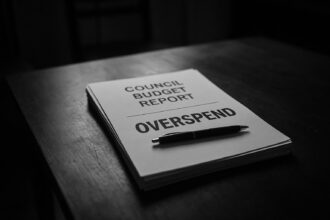A Rollalong modular unit installed by Wates has gone on public display after a rapid-design-to-installation process, forming part of Havering Council’s pilot to swap costly hotel and B&B placements for high-quality, quickly deployed temporary homes.
An offsite modular home engineered by Rollalong and installed by Wates Residential has captured attention outside City Hall in London, with organisers claiming the unit can be installed in under two hours and with plans for a prototype scheme to be rolled out in Havering later this year. The display sits within a broader context of London’s housing crisis, where one in 21 children are homeless and the daily cost to local authorities of housing homeless families in temporary accommodation is pushing toward £4 million.
Across the capital, Havering Council is pursuing a broader, tangible push to explore rapid, high-quality temporary housing. A modular home installation at Romford Market ran from 10 March to 3 April 2025 and was designed, delivered and built in just over 90 days, illustrating how quickly quality housing can be deployed for families in housing need. The project originated from The Building Centre’s New Homes in New Ways exhibition in London and involved Rollalong (modular manufacture) and Wates (lead contractor) alongside Havering’s 12 Estates Joint Venture, with the display forming part of the council’s wider programme to test temporary accommodation options while permanent homes are developed. Havering emphasised that the unit demonstrates modern, sustainable living solutions and was intended as a launchpad for future deployments. A Modular Playbook accompanies the display to guide future deployment and delivery. In parallel, Havering confirmed planning permission for a pilot modular home scheme on the Waterloo and Queen Street Estate in Romford, delivering 18 modular homes to provide temporary accommodation for families in need and to move away from hotels and hostels as part of a phased approach that aligns with the council’s regeneration ambitions and energy/safety priorities.
Rollalong’s involvement in Romford Market has been framed as a forward-looking demonstration of what factory-built housing can achieve when paired with strong local partnerships. The installation has been relocated from The Building Centre to Romford Market for a four‑week public showcase from 10 March to 3 April 2025, a move described by Wates as part of a broader effort to relieve pressure on hotels and B&Bs by delivering high‑quality, energy‑efficient temporary accommodation. The project is led by Wates in partnership with Rollalong and Havering Council’s 12 Estates JV, with further collaboration around Waterloo and Queen Street regeneration proposals. The display is designed to spark a conversation about housing supply and placement within communities, and to provide a practical, scalable model for rapid delivery of temporary homes.
Parallel to the Romford demonstrations, Rollalong and its collaborators have highlighted a wider programme under The Building Centre’s New Homes in New Ways banner. Design4Structures outlines the collaboration between RCKa Architects, Wates (Lead Contractor), Rollalong (Offsite Manufacturer) and Design 4 Structures as Structural Engineers, noting a prototype two-bedroom apartment unveiled outside the Building Centre with a timeline from design to manufacture to installation of around two months. The unit arrived in London on 7 February 2025, and the project describes how the structure can be coordinated to support multiple storeys and achieve a balance of finish, efficiency and affordability. The initiative positions MMC as a scalable, affordable solution to London’s housing pressures, illustrating how factory-built housing can be deployed rapidly without compromising standards.
In sum, the momentum around Rollalong’s prototype outside City Hall has given way to a broader, interconnected programme across Havering and central London. With Romford Market’s temporary showcase and the Waterloo and Queen Street pilot now in motion, plus a growing body of design and engineering work detailing rapid delivery timelines, industry data shows a concerted effort to replace hotel-based temporary housing with fast, quality modular homes. The dialogue is supported by industry and design organisations eager to test, refine and scale these solutions in real communities, while councils weigh the implications for planning, safety and long-term affordability.
 Reference Map:
Reference Map:
Source: Noah Wire Services
- https://www.bdonline.co.uk/home/rcka-installs-prototype-modular-solution-to-housing-crisis-outside-city-hall/5137651.article – Please view link – unable to able to access data
- https://www.havering.gov.uk/news/article/1501/temporary-modular-home-installed-at-romford-market – The London Borough of Havering reports a temporary modular home installation at Romford Market, open to the public from 10 March to 3 April 2025. The unit demonstrates modern, sustainable living solutions and was designed, delivered and built in just over 90 days, illustrating how quickly quality housing can be deployed for families in housing need. The module originated from The Building Centre’s New Homes in New Ways exhibition in London and involved key partners Rollalong (modular manufacturer) and Wates (lead contractor) alongside Havering’s 12 Estates Joint Venture. The display is part of Havering’s broader programme to explore temporary accommodation options while permanent homes are developed.
- https://www.wates.co.uk/news/residential-development/residential/modular-installation-moves-to-romford-market-havering/ – Wates reports that the modular home installation, originally exhibited at The Building Centre, has been relocated to Romford Market for a four‑week public showcase from 10 March to 3 April 2025. The unit was designed, delivered and built in just over 90 days, and demonstrates high‑quality, energy‑efficient temporary accommodation that can relieve pressure on hotels and B&Bs. The project is led by Wates in partnership with Rollalong and Havering Council’s 12 Estates JV, with further collaboration around Waterloo and Queen Street regeneration proposals. A Modular Playbook accompanies the display to guide future deployment and delivery.
- https://rollalong.co.uk/rollalong-showcases-the-future-of-temporary-housing-at-romford-market/ – Rollalong describes bringing a cutting‑edge modular home installation to Romford Market, open to the public from 10 March to 3 April 2025. The installation—designed, delivered and built in just over 90 days—shows rapid deployment of high‑quality, self‑contained homes, designed to provide safe, warm accommodation for families in transition. The unit originated from The Building Centre’s New Homes in New Ways exhibition and sits within Rollalong’s broader programme with RCKa Architects and Wates to prove that factory‑built housing can help reduce reliance on hotels. The Romford Market display is intended as a conversation starter about housing supply and placement within communities.
- https://www.havering.gov.uk/news/article/1534/planning-permission-granted-for-pilot-modular-home-scheme – Havering Council confirms planning permission for a pilot modular home scheme on the Waterloo and Queen Street Estate in Romford. The decision, part of Havering’s joint venture with Wates Residential, will deliver 18 modular homes to provide temporary accommodation for families in need and to move away from hotels and hostels. The scheme aligns with London’s housing affordability pressures and the council’s regeneration ambitions, while emphasising efficiency, energy performance and safety. Officers anticipate delivery as part of a broader phased approach, with the Waterloo and Queen Street project forming the pilot stage and set to begin in the coming months.
- https://www.design4structures.com/new-homes-in-new-ways-delivering-fast-cost-effective-and-high-quality-housing/ – Design4Structures presents the New Homes in New Ways project, detailing collaboration between RCKa Architects, Wates (Lead Contractor), Rollalong (Offsite Manufacturer), and Design 4 Structures as Structural Engineers. A prototype two‑bedroom apartment was unveiled outside the Building Centre in London, designed for efficiency and rapid delivery. The article records a design‑to‑manufacture‑to‑installation timeline of around two months and notes the prototype’s arrival in London on 7 February 2025. It explains the structural coordination required to support up to four storeys, the module’s dimensions and finish standards, and highlights the project’s aim to demonstrate MMC as a scalable, affordable solution to housing pressures in London.
- https://www.buildingcentre.co.uk/whats_on/exhibitions/new-homes-in-new-ways – Building Centre’s New Homes in New Ways exhibition page explains MMC’s role in addressing the housing crisis, with a focus on social rent housing and temporary accommodation. It outlines the exhibition’s aims, case studies and potential outcomes of factory‑built housing, emphasising speed, quality and sustainability. The page places MMC within policy, planning and energy‑efficiency debates and highlights how temporary accommodation could be delivered more rapidly without compromising standards. It notes the exhibition’s duration and the accompanying summit for housing decision‑makers to learn from industry practice, illustrating MMC as a strategic tool for London and beyond.
Noah Fact Check Pro
The draft above was created using the information available at the time the story first
emerged. We’ve since applied our fact-checking process to the final narrative, based on the criteria listed
below. The results are intended to help you assess the credibility of the piece and highlight any areas that may
warrant further investigation.
Freshness check
Score:
6
Notes:
Findings: The narrative is not wholly new—key elements (prototype demonstrator, Building Centre display, Romford Market showcase and partner organisations) were publicly posted earlier in Feb–Mar 2025.  Earliest clearly traceable publication/appearance of the specific prototype demonstration: design/manufacture timeline and arrival in central London on 7 February 2025 (RCKa / project page). ([rcka.co.uk](https://rcka.co.uk/our-projects/new-homes-in-new-ways/?utm_source=chatgpt.com)) The Building Centre exhibition ran through February 2025, and the Romford Market public showcase ran 10 March–3 April 2025 (Havering Council / Wates / Rollalong posts). ([buildingcentre.co.uk](https://www.buildingcentre.co.uk/whats_on/exhibitions/new-homes-in-new-ways-modern-methods-of-construction?utm_source=chatgpt.com), [havering.gov.uk](https://www.havering.gov.uk/news/article/1501/temporary-modular-home-installed-at-romford-market?utm_source=chatgpt.com), [wates.co.uk](https://www.wates.co.uk/news/residential-development/residential/modular-installation-moves-to-romford-market-havering/?utm_source=chatgpt.com)) Multiple partner organisations published near-identical descriptions and imagery (Rollalong, Wates, RCKa, Design4Structures, Havering Council), indicating the piece is largely derived from coordinated project communications/press material rather than an independent scoop.
Earliest clearly traceable publication/appearance of the specific prototype demonstration: design/manufacture timeline and arrival in central London on 7 February 2025 (RCKa / project page). ([rcka.co.uk](https://rcka.co.uk/our-projects/new-homes-in-new-ways/?utm_source=chatgpt.com)) The Building Centre exhibition ran through February 2025, and the Romford Market public showcase ran 10 March–3 April 2025 (Havering Council / Wates / Rollalong posts). ([buildingcentre.co.uk](https://www.buildingcentre.co.uk/whats_on/exhibitions/new-homes-in-new-ways-modern-methods-of-construction?utm_source=chatgpt.com), [havering.gov.uk](https://www.havering.gov.uk/news/article/1501/temporary-modular-home-installed-at-romford-market?utm_source=chatgpt.com), [wates.co.uk](https://www.wates.co.uk/news/residential-development/residential/modular-installation-moves-to-romford-market-havering/?utm_source=chatgpt.com)) Multiple partner organisations published near-identical descriptions and imagery (Rollalong, Wates, RCKa, Design4Structures, Havering Council), indicating the piece is largely derived from coordinated project communications/press material rather than an independent scoop.  ([rollalong.co.uk](https://rollalong.co.uk/rollalong-showcases-the-future-of-temporary-housing-at-romford-market/?utm_source=chatgpt.com), [wates.co.uk](https://www.wates.co.uk/news/residential-development/residential/modular-installation-moves-to-romford-market-havering/?utm_source=chatgpt.com)) If the BD narrative was published after these dates, it therefore recycles previously published project communications rather than breaking new information.
([rollalong.co.uk](https://rollalong.co.uk/rollalong-showcases-the-future-of-temporary-housing-at-romford-market/?utm_source=chatgpt.com), [wates.co.uk](https://www.wates.co.uk/news/residential-development/residential/modular-installation-moves-to-romford-market-havering/?utm_source=chatgpt.com)) If the BD narrative was published after these dates, it therefore recycles previously published project communications rather than breaking new information.  However, the report also references planning permission and pilot details published later (planning approval notices dated 29 May / early June 2025), so parts of the narrative do integrate later, verifiable steps in the programme. ([havering.gov.uk](https://www.havering.gov.uk/news/article/1534/planning-permission-granted-for-pilot-modular-home-scheme?utm_source=chatgpt.com), [wates.co.uk](https://www.wates.co.uk/news/residential-development/residential/planning-permission-granted-for-a-pilot-modular-home-scheme/?utm_source=chatgpt.com)) Overall: partly fresh (recent planning updates), but largely recycled PR/organisation material—flagged as ‘re-publication’ rather than original reporting.
However, the report also references planning permission and pilot details published later (planning approval notices dated 29 May / early June 2025), so parts of the narrative do integrate later, verifiable steps in the programme. ([havering.gov.uk](https://www.havering.gov.uk/news/article/1534/planning-permission-granted-for-pilot-modular-home-scheme?utm_source=chatgpt.com), [wates.co.uk](https://www.wates.co.uk/news/residential-development/residential/planning-permission-granted-for-a-pilot-modular-home-scheme/?utm_source=chatgpt.com)) Overall: partly fresh (recent planning updates), but largely recycled PR/organisation material—flagged as ‘re-publication’ rather than original reporting. 
Quotes check
Score:
5
Notes:
Findings: Direct quotations attributed to partners (for example Paul Jones, Rollalong; Hugh Jeffery / Wates) appear verbatim in the council and company posts used to promote the demonstrator. The earliest online appearance of those same quotes is on the Havering Council page published 10 March 2025 (Paul Jones / Hugh Jeffery quotes), with the company (Rollalong) and contractor (Wates) reproducing the same wording on 11–12 March 2025. ([havering.gov.uk](https://www.havering.gov.uk/news/article/1501/temporary-modular-home-installed-at-romford-market?utm_source=chatgpt.com), [rollalong.co.uk](https://rollalong.co.uk/rollalong-showcases-the-future-of-temporary-housing-at-romford-market/?utm_source=chatgpt.com), [wates.co.uk](https://www.wates.co.uk/news/residential-development/residential/modular-installation-moves-to-romford-market-havering/?utm_source=chatgpt.com)) This strongly indicates the quotes were issued as part of the project communications pack and then re-used across partners and local outlets (common practice for joint demonstrations).  Identical wording across partner pages suggests the quotes are not exclusive reporting by the BD narrative but are likely from press material or coordinated statements. If the BD piece presents these as exclusive interviews, that would be misleading.
Identical wording across partner pages suggests the quotes are not exclusive reporting by the BD narrative but are likely from press material or coordinated statements. If the BD piece presents these as exclusive interviews, that would be misleading.  Some key factual lines (dates/timelines) originate with the design team (RCKa) on/around 7 February 2025 but are not presented as quoted testimony there. ([rcka.co.uk](https://rcka.co.uk/our-projects/new-homes-in-new-ways/?utm_source=chatgpt.com)) Where wording differs (e.g. RCKa uses ‘one in twenty-three children’ vs later council/press ‘one in 21’), inconsistencies should be flagged and checked (see Plausibility).
Some key factual lines (dates/timelines) originate with the design team (RCKa) on/around 7 February 2025 but are not presented as quoted testimony there. ([rcka.co.uk](https://rcka.co.uk/our-projects/new-homes-in-new-ways/?utm_source=chatgpt.com)) Where wording differs (e.g. RCKa uses ‘one in twenty-three children’ vs later council/press ‘one in 21’), inconsistencies should be flagged and checked (see Plausibility). 
Source reliability
Score:
8
Notes:
Findings: The narrative is traceable to identifiable, verifiable organisations with an online presence: RCKa (architecture practice), The Building Centre (exhibition host), London Borough of Havering (local authority), Wates (major contractor) and Rollalong (manufacturer). These organisations have official posts describing the project and dates. ([rcka.co.uk](https://rcka.co.uk/our-projects/new-homes-in-new-ways/?utm_source=chatgpt.com), [buildingcentre.co.uk](https://www.buildingcentre.co.uk/whats_on/exhibitions/new-homes-in-new-ways-modern-methods-of-construction?utm_source=chatgpt.com), [havering.gov.uk](https://www.havering.gov.uk/news/article/1501/temporary-modular-home-installed-at-romford-market?utm_source=chatgpt.com), [wates.co.uk](https://www.wates.co.uk/news/residential-development/residential/modular-installation-moves-to-romford-market-havering/?utm_source=chatgpt.com), [rollalong.co.uk](https://rollalong.co.uk/rollalong-showcases-the-future-of-temporary-housing-at-romford-market/?utm_source=chatgpt.com)) Strengths: council and contractor pages are primary, authoritative communications for a local pilot scheme ( ). Design4Structures also documents technical collaboration and dates. ([design4structures.com](https://www.design4structures.com/new-homes-in-new-ways-delivering-fast-cost-effective-and-high-quality-housing/?utm_source=chatgpt.com)) Concerns: several smaller local/regional outlets republished the same material (e.g. local newsblogs), which amplifies the PR but adds little independent verification; these should be treated as secondary amplification rather than independent reporting.
). Design4Structures also documents technical collaboration and dates. ([design4structures.com](https://www.design4structures.com/new-homes-in-new-ways-delivering-fast-cost-effective-and-high-quality-housing/?utm_source=chatgpt.com)) Concerns: several smaller local/regional outlets republished the same material (e.g. local newsblogs), which amplifies the PR but adds little independent verification; these should be treated as secondary amplification rather than independent reporting.  No evidence was found that any named organisation is fabricated—each has a verifiable web presence and corporate/ council records.
No evidence was found that any named organisation is fabricated—each has a verifiable web presence and corporate/ council records. 
Plausability check
Score:
7
Notes:
Findings: Overall claims are plausible and supported by partner organisations’ accounts: the prototype demonstrator (three volumetric modules) arrived in London and was assembled for public display (7 Feb / Building Centre), and the unit was later exhibited at Romford Market (10 Mar–3 Apr 2025). ([rcka.co.uk](https://rcka.co.uk/our-projects/new-homes-in-new-ways/?utm_source=chatgpt.com), [buildingcentre.co.uk](https://www.buildingcentre.co.uk/whats_on/exhibitions/new-homes-in-new-ways-modern-methods-of-construction?utm_source=chatgpt.com), [havering.gov.uk](https://www.havering.gov.uk/news/article/1501/temporary-modular-home-installed-at-romford-market?utm_source=chatgpt.com)) The planning application and subsequent planning permission for an 18‑unit pilot at Waterloo & Queen Street are documented on Havering / Wates pages (planning submission and approval dates differ; planning permission notice published 29 May 2025 / Wates coverage in June 2025). ([havering.gov.uk](https://www.havering.gov.uk/news/article/1483/planning-application-submitted-for-temporary-modular-homes-at-waterloo-and-queen-street?utm_source=chatgpt.com), [wates.co.uk](https://www.wates.co.uk/news/residential-development/residential/planning-permission-granted-for-a-pilot-modular-home-scheme/?utm_source=chatgpt.com)) Flags / discrepancies: • Location wording varies between accounts — RCKa and Design4Structures say the prototype arrived and was exhibited outside The Building Centre (central London), Havering/Wates/Rollalong reference relocation to Romford Market (Havering) for a public showcase, and some company text refers to being ‘beside the Mayor’s Office’ / City Hall area. This inconsistent location phrasing should be checked; the primary technical demonstration was outside The Building Centre (7 Feb) and the local showcase was at Romford Market (10 Mar).  ([rcka.co.uk](https://rcka.co.uk/our-projects/new-homes-in-new-ways/?utm_source=chatgpt.com), [havering.gov.uk](https://www.havering.gov.uk/news/article/1501/temporary-modular-home-installed-at-romford-market?utm_source=chatgpt.com), [rollalong.co.uk](https://rollalong.co.uk/?utm_source=chatgpt.com)) • The claim that the unit can be ‘installed in under two hours’ appears in the BD text but I could not find independent corroboration of a verified ‘under two hours’ full installation time in partner pages or third‑party reporting; partners describe rapid assembly/installation and cite ‘designed, delivered and built in just over 90 days’ for the demonstrator and ‘designed/manufactured/installed in two months’ in other notes — these are compatible but not identical to the two‑hour claim (installation time likely refers to site craning/connection rather than full commissioning).
([rcka.co.uk](https://rcka.co.uk/our-projects/new-homes-in-new-ways/?utm_source=chatgpt.com), [havering.gov.uk](https://www.havering.gov.uk/news/article/1501/temporary-modular-home-installed-at-romford-market?utm_source=chatgpt.com), [rollalong.co.uk](https://rollalong.co.uk/?utm_source=chatgpt.com)) • The claim that the unit can be ‘installed in under two hours’ appears in the BD text but I could not find independent corroboration of a verified ‘under two hours’ full installation time in partner pages or third‑party reporting; partners describe rapid assembly/installation and cite ‘designed, delivered and built in just over 90 days’ for the demonstrator and ‘designed/manufactured/installed in two months’ in other notes — these are compatible but not identical to the two‑hour claim (installation time likely refers to site craning/connection rather than full commissioning).  ([wates.co.uk](https://www.wates.co.uk/news/residential-development/residential/modular-installation-moves-to-romford-market-havering/?utm_source=chatgpt.com), [rcka.co.uk](https://rcka.co.uk/our-projects/new-homes-in-new-ways/?utm_source=chatgpt.com)) • Numeric/statistical claims: the article cites London homelessness figures (daily cost ~£4m; ‘one in 21 children’) that match London Councils’ public figures reported in 2024–25 material — but note RCKa used ‘one in 23’ in its write-up, so there is an inconsistency across partners that should be resolved before treating the figure as precise. ([londoncouncils.gov.uk](https://www.londoncouncils.gov.uk/news-and-press-releases/2024/emergency-warning-issued-london-homelessness-hits-new-records?utm_source=chatgpt.com), [rcka.co.uk](https://rcka.co.uk/our-projects/new-homes-in-new-ways/?utm_source=chatgpt.com)) Overall: credible and plausible, but contains some unverified specifics and small inconsistencies (location phrasing, an exact ‘under two hours’ installation claim, differing child‑homelessness fractions) that warrant caution.
([wates.co.uk](https://www.wates.co.uk/news/residential-development/residential/modular-installation-moves-to-romford-market-havering/?utm_source=chatgpt.com), [rcka.co.uk](https://rcka.co.uk/our-projects/new-homes-in-new-ways/?utm_source=chatgpt.com)) • Numeric/statistical claims: the article cites London homelessness figures (daily cost ~£4m; ‘one in 21 children’) that match London Councils’ public figures reported in 2024–25 material — but note RCKa used ‘one in 23’ in its write-up, so there is an inconsistency across partners that should be resolved before treating the figure as precise. ([londoncouncils.gov.uk](https://www.londoncouncils.gov.uk/news-and-press-releases/2024/emergency-warning-issued-london-homelessness-hits-new-records?utm_source=chatgpt.com), [rcka.co.uk](https://rcka.co.uk/our-projects/new-homes-in-new-ways/?utm_source=chatgpt.com)) Overall: credible and plausible, but contains some unverified specifics and small inconsistencies (location phrasing, an exact ‘under two hours’ installation claim, differing child‑homelessness fractions) that warrant caution. 
Overall assessment
Verdict (FAIL, OPEN, PASS): OPEN
Confidence (LOW, MEDIUM, HIGH): MEDIUM
Summary:
Summary: The central claims (a RCKa/ Rollalong / Wates demonstrator prototype was manufactured, brought into central London in early February 2025 and later relocated to Romford Market for a public showcase; Havering and Wates have pursued a pilot 18‑unit modular project) are well supported by primary organisational communications and council/contractor postings.  Key primary traces: RCKa (prototype arrival 7 Feb 2025) and The Building Centre exhibition; Havering Council (Romford Market 10 Mar–3 Apr 2025) and planning permission notices; Wates and Rollalong company posts. ([rcka.co.uk](https://rcka.co.uk/our-projects/new-homes-in-new-ways/?utm_source=chatgpt.com), [buildingcentre.co.uk](https://www.buildingcentre.co.uk/whats_on/exhibitions/new-homes-in-new-ways-modern-methods-of-construction?utm_source=chatgpt.com), [havering.gov.uk](https://www.havering.gov.uk/news/article/1501/temporary-modular-home-installed-at-romford-market?utm_source=chatgpt.com), [wates.co.uk](https://www.wates.co.uk/news/residential-development/residential/modular-installation-moves-to-romford-market-havering/?utm_source=chatgpt.com)) Major risks and reasons for ‘OPEN’ verdict: • Recycled PR — much of the narrative reproduces partner press/communications (quotes and text appear verbatim across council and company pages), so the item reads as repackaged project communications rather than independent investigative reporting.
Key primary traces: RCKa (prototype arrival 7 Feb 2025) and The Building Centre exhibition; Havering Council (Romford Market 10 Mar–3 Apr 2025) and planning permission notices; Wates and Rollalong company posts. ([rcka.co.uk](https://rcka.co.uk/our-projects/new-homes-in-new-ways/?utm_source=chatgpt.com), [buildingcentre.co.uk](https://www.buildingcentre.co.uk/whats_on/exhibitions/new-homes-in-new-ways-modern-methods-of-construction?utm_source=chatgpt.com), [havering.gov.uk](https://www.havering.gov.uk/news/article/1501/temporary-modular-home-installed-at-romford-market?utm_source=chatgpt.com), [wates.co.uk](https://www.wates.co.uk/news/residential-development/residential/modular-installation-moves-to-romford-market-havering/?utm_source=chatgpt.com)) Major risks and reasons for ‘OPEN’ verdict: • Recycled PR — much of the narrative reproduces partner press/communications (quotes and text appear verbatim across council and company pages), so the item reads as repackaged project communications rather than independent investigative reporting.  ([rollalong.co.uk](https://rollalong.co.uk/rollalong-showcases-the-future-of-temporary-housing-at-romford-market/?utm_source=chatgpt.com), [havering.gov.uk](https://www.havering.gov.uk/news/article/1501/temporary-modular-home-installed-at-romford-market?utm_source=chatgpt.com)) • Minor factual inconsistencies — location descriptions (Building Centre / Romford Market / ‘beside the Mayor’s Office’) and differing childhood homelessness ratios (one in 21 vs one in 23 across partner write‑ups) appear in the material and should be reconciled.
([rollalong.co.uk](https://rollalong.co.uk/rollalong-showcases-the-future-of-temporary-housing-at-romford-market/?utm_source=chatgpt.com), [havering.gov.uk](https://www.havering.gov.uk/news/article/1501/temporary-modular-home-installed-at-romford-market?utm_source=chatgpt.com)) • Minor factual inconsistencies — location descriptions (Building Centre / Romford Market / ‘beside the Mayor’s Office’) and differing childhood homelessness ratios (one in 21 vs one in 23 across partner write‑ups) appear in the material and should be reconciled.  ([rcka.co.uk](https://rcka.co.uk/our-projects/new-homes-in-new-ways/?utm_source=chatgpt.com), [londoncouncils.gov.uk](https://www.londoncouncils.gov.uk/news-and-press-releases/2025/response-parliamentary-report-children-temporary-accommodation?utm_source=chatgpt.com)) • Unverified specific claim — the precise assertion that a finished unit ‘can be installed in under two hours’ lacks clear, independent verification in the partner pages and press coverage (partners claim rapid assembly but give different timeframes).
([rcka.co.uk](https://rcka.co.uk/our-projects/new-homes-in-new-ways/?utm_source=chatgpt.com), [londoncouncils.gov.uk](https://www.londoncouncils.gov.uk/news-and-press-releases/2025/response-parliamentary-report-children-temporary-accommodation?utm_source=chatgpt.com)) • Unverified specific claim — the precise assertion that a finished unit ‘can be installed in under two hours’ lacks clear, independent verification in the partner pages and press coverage (partners claim rapid assembly but give different timeframes).  ([wates.co.uk](https://www.wates.co.uk/news/residential-development/residential/modular-installation-moves-to-romford-market-havering/?utm_source=chatgpt.com), [rcka.co.uk](https://rcka.co.uk/our-projects/new-homes-in-new-ways/?utm_source=chatgpt.com)) Recommendation: Treat the narrative as largely accurate in its high‑level claims (prototype, partners, dates of public displays, planning steps) because multiple primary parties corroborate them, but flag the piece for editors on grounds of recycled press material, confirm location phrasing and the precise installation time before publishing the specific ‘under two hours’ claim as a fact, and reconcile the differing homelessness ratios/figures with the London Councils primary data.
([wates.co.uk](https://www.wates.co.uk/news/residential-development/residential/modular-installation-moves-to-romford-market-havering/?utm_source=chatgpt.com), [rcka.co.uk](https://rcka.co.uk/our-projects/new-homes-in-new-ways/?utm_source=chatgpt.com)) Recommendation: Treat the narrative as largely accurate in its high‑level claims (prototype, partners, dates of public displays, planning steps) because multiple primary parties corroborate them, but flag the piece for editors on grounds of recycled press material, confirm location phrasing and the precise installation time before publishing the specific ‘under two hours’ claim as a fact, and reconcile the differing homelessness ratios/figures with the London Councils primary data.  ([rcka.co.uk](https://rcka.co.uk/our-projects/new-homes-in-new-ways/?utm_source=chatgpt.com), [buildingcentre.co.uk](https://www.buildingcentre.co.uk/whats_on/exhibitions/new-homes-in-new-ways-modern-methods-of-construction?utm_source=chatgpt.com), [havering.gov.uk](https://www.havering.gov.uk/news/article/1501/temporary-modular-home-installed-at-romford-market?utm_source=chatgpt.com), [londoncouncils.gov.uk](https://www.londoncouncils.gov.uk/news-and-press-releases/2024/emergency-warning-issued-london-homelessness-hits-new-records?utm_source=chatgpt.com))
([rcka.co.uk](https://rcka.co.uk/our-projects/new-homes-in-new-ways/?utm_source=chatgpt.com), [buildingcentre.co.uk](https://www.buildingcentre.co.uk/whats_on/exhibitions/new-homes-in-new-ways-modern-methods-of-construction?utm_source=chatgpt.com), [havering.gov.uk](https://www.havering.gov.uk/news/article/1501/temporary-modular-home-installed-at-romford-market?utm_source=chatgpt.com), [londoncouncils.gov.uk](https://www.londoncouncils.gov.uk/news-and-press-releases/2024/emergency-warning-issued-london-homelessness-hits-new-records?utm_source=chatgpt.com))













